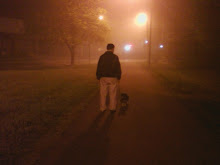Sermon preached August 26, 2012
Texts: I Kings 8:1,6,10-11, 22-30, 41-43
I am now in my eighth year as pastor at First UMC, though it is all our first year together as the new First United Methodist Church which includes Chester Park United Methodist Church. Anyway, there were some interesting things I noticed early in my time here. Every so often, I would see vans from florists gather together in our parking lot. I wondered about that. Were these just friends who liked to meet on breaks? I can’t remember if someone told me, or I just figured it out – the florist delivery drivers were meeting to consolidate their work. If Engwalls was headed to church X for a funeral, maybe they could take the flowers from Peterson-Anderson, and vice versa. By the way, I have in no way been compensated for product placement in this sermon!
I also noticed that on Tuesday mornings as people came into the building, the headed right away for the bathrooms. Did they all just have long drives to get here? Tuesdays used to be the Weight Watchers meeting day. It took me awhile to realize what was happening - - - Weight Watchers – weigh-in - bathroom first!
Weight Watchers no longer meets here. They left this spring for a location just above Cold Stone Creamery – sort of the epitome of irony. I trust they have good bathroom facilities in their new location. Yet some might think that Weight Watchers is making a return here. Last Sunday’s sermon was entitled “Just Goes To My Hips” and this Sunday’s is “Thin Places.”
Thin places. This is not a weight loss goal. Marcus Borg describes “thin places” this way. Thin places are places where… we behold God, experience the one in whom we live, all around and within us…. A thin place is a sacrament of the sacred, a mediator of the sacred, a means whereby the sacred becomes present to us. A thin place is a means of grace. (The Heart of Christianity, 156)
I Kings 8 is about a thin place. It is about the temple Solomon had built for God. It is about the dedication of that temple, and it seems as if it was quite the occasion. And when the priests came out of the holy place, a cloud filled the house of the Lord, so that the priests could not stand to minister because of the cloud; for the glory of the Lord filled the house of the Lord. This is a wild description of a thin place. Solomon, the king, prays. He recalls God’s steadfast love and he prays that the temple, though it cannot really contain God, would always be a thin place. O Lord my God… that your eyes may be open night and day toward this house. Remarkably, Solomon also prays that this thin place would be an inclusive place. When a foreigner comes and prays toward this house, then hear in heaven your dwelling place.
I want to briefly develop this idea of thin places and then do a little testifying and then wrap up.
The notion that there are “thin places” is rooted in the idea that God is everywhere. There is a technical theological word for this. We say that God is “omnipresent” – present everywhere. Marcus Borg: “Thin places” has its home in a particular way of thinking about God. Deeply rooted in the Bible and the Christian tradition, this way of thinking sees God, “the More,” as the encompassing Spirit in which everything is. God is not somewhere else, but “right here.” (The Heart of Christianity, 155) We hear this in passages like Psalm 139 (The Message): Is there anyplace I can go to avoid your Spirit? to be out of your sight? If I climb to the sky, you’re there! If I go underground, you’re there! If I flew on morning’s wings to the far western horizon, You’d find me in a minute – you’re already there waiting! We hear it in this morning’s text. But will God indeed dwell on the earth? Even heaven and the highest heaven cannot contain you, much less this house that I have built!
Joan Chittister shares this story from the Islamic Sufi tradition. Once upon a time a Sufi made the annual pilgrimage to Mecca. It was a long walk for him and the sun was warm and bright. He had come miles without stopping. Finally, in sight of the mosque at Mecca, sure of the goal now, the old man lay down on the road to rest. Suddenly one of the other pilgrims shook him awake, none too gently. “Wake up,” he commanded. “You blaspheme. You lie in such a way that your feet are pointed toward God in the holy mosque! What kind of Sufi are you?!” The old Sufi opened one eye, smiled just a bit, and said, “I thank you, holy sir. Now if you would be kind enough to turn my feet in some direction where they are not pointed toward God.” (The Breath of the Soul, 63-64)
God is everywhere. God is all around. Yet sometimes, God can feel distant. We can recall the words of Psalm 22: “My God, my God, why have you forsaken me? Why are you so far from helping me, from the words of my groaning?” Jesus used these words on the cross. This is not my focus today, but I don’t want to ignore the reality of this experience in our lives – the dark nights of the soul.
Other times, the God we affirm all around and within us, seems very near, as near as the beating of our hearts or the movement of our breath. That’s what the idea of thin places is all about. Marcus Borg: A thin place is anywhere our hearts are opened… a means whereby the sacred becomes present to us (156). Thin places can literally be places, but they can also be moments, those times in our lives when God felt very near, where we knew in our bones, God was deep inside and all around. One of the great pains of a church building closing, is that it has been a thin place for so many over the years. The experiences you had at Chester Park will always be with you, but there is pain that the building won’t be there in the same way. Some of the folks here at First experienced some of that when the congregation moved into this building. The old building on Third and Third West was a thin place, too.
We grieve when our thin places, that are literally places, change or are gone. We can also celebrate the wonderful variety of places and moments that can be thin places. Here is where I want to do some testifying to my own experiences of thin places – places and moments when the God I know in Jesus Christ felt remarkably close and deep within. I share these to celebrate the wonderful grace of God and to help us see the variety of possibilities for thin places.
Driving one night near Itasca State Park, going home to Alexandria from a church conference I pulled to the shoulder and got out of the car for a few moments. The snow was falling heavily, the wind was blowing, and there were no other sounds. I was alone, but knew I wasn’t. Driving to worship in Hawley, Minnesota from Alexandria early on a Sunday morning, I was listening to a tape of John Coltrane – “My Favorite Things,” “Naima,” “A Love Supreme” – and I felt completely surrounded by the beauty of God’s grace. I have been to the Rosebud Reservation in South Dakota twice on mission trips. There is something about the wide open horizons there, and the rolling hills, and the sense of history that makes that a thin place. Sharing work with others on such trips has often been a thin place, as is shared work at Ruby’s Pantry quite often. The shores of Lake Superior, especially at night when you experience the lake as much through sound as sight, have been a thin place. Worship when United Methodists gather at Annual Conference is often a thin place for me. This past week we welcomed “shut-in” members of our congregation for communion and lunch. God’s grace has often been remarkably present to me in that event. The intention of Sunday worship is that this will often be a thin place for us, I know it is for me, often.
I deeply appreciate how Diana Butler Bass discusses worship in her book, Christianity For the Rest of Us. This is the foundation of worship. If you can take an hour on Sunday morning and open people to experiencing just a quarter-second of awe, wonder, and surrender…. Hospitality, beauty, celebration. Awe, wonder, mystery. Communities making merry…. Every act of worship, no matter how private or public, how discreet or elaborate, enacts God’s dream for the world. By learning to look for it, by opening ourselves to sensing the awe and wonder of the dance, we might glimpse the ripples of God (173, 178). Worship is intended to be a thin place, but there is no magic formula for this. It takes our best thinking and imagining. It takes all of us coming together with open hearts and curious minds.
One last thin place that I would like to testify to and that is words. As I was going to bed Thursday night, I was reading an essay by John Leonard, “Reading for My Life.” Leonard was a long-time book reviewer for various publications and for CBS Sunday Morning. His essay ends this way: So do they all, these writers I’m waving my arms about, these angels made of words. Watch out for them. They give you dreams. I thought about this sermon and all the angels made of words I have known, words that come to me and open me up and create a thin place where God shines more brightly, where God plants God’s dream for the world a little more deeply in my soul. Novelists, essayists, poets, philosophers, theologians have been thin places for me.
Thin places. Where would you testify to having discovered them in your life? We cherish them. We trust that with God, more such places will be created in our lives and in our life together.
How? We pray for open hearts. Marcus Borg rightly suggests that “open hearts” and “thin places” suggest much of what is central to being Christian (149). We pay attention. One poet whose poems have often been thin places for me is Mary Oliver.
Instructions for living a life:
Pay attention.
Be astonished.
Tell about it. (Red Bird, 37)
We slow down – but more about that next week.
In the meantime, may you be blessed with thin places. Amen.
Subscribe to:
Post Comments (Atom)


2 comments:
:)
I second that... :) :)
Post a Comment